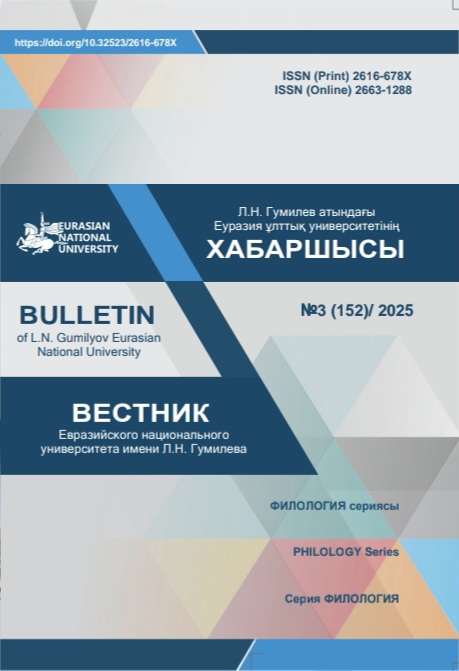Linguocultural and cognitive features of Kazakh and English toponyms
Views: 160 / PDF downloads: 92
DOI:
https://doi.org/10.32523/2616-678X-2025-152-3-114-132Keywords:
toponymy, conceptology, cognitive linguistics, national worldview, linguoculturology, intercultural communication, toponymic systemAbstract
The article presents a comparative linguistic analysis of the linguocultural and cognitive features of toponymic units in the Kazakh and English languages. The study focuses on the names of natural and geographical entities that hold cultural and cognitive significance in both nations. Toponyms in Kazakh and English are shaped by distinct historical, social, and environmental contexts, and their semantic features reflect a range of culturally encoded meanings. The article systematically examines the concept of toponymic conceptualization, its linguistic realization, and its role in constructing national identity. The primary objective is to explore toponymic concepts as cognitive structures that encapsulate ethnocultural values, thereby revealing culturally specific aspects of the Kazakh and English worldviews. Through the collection, classification, and comparative analysis of geographical names, the study identifies shared and divergent cognitive patterns between the two linguistic communities. Using a linguocognitive approach, the analysis of key toponymic concepts such as ауыл (village), атамекен (native land), дала (steppe), төбе (hill), and су (water) demonstrates how toponyms function not only as place names but also as carriers of national consciousness and cultural memory. The findings underscore the significance of toponymy as both a nominative and cognitive-cultural phenomenon, contributing to a deeper understanding of the linguistic worldviews of the Kazakh and English peoples.







